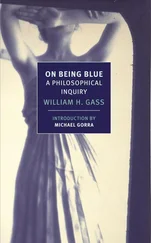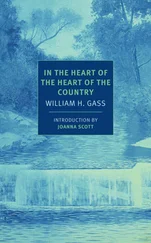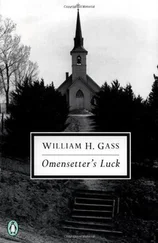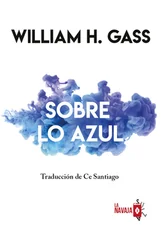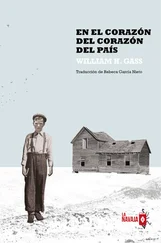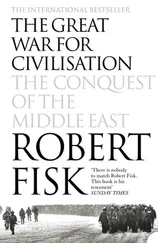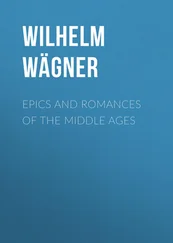Yes, in that very orchestra where his father might have played had he chosen to imagine himself a concert violinist instead of a fleeing Jew. His mother carried him to London like coffee in a thermos. To grow up in a ruin, amid the blitzed, the burned and broken, a foretaste of the soon-to-be forlorn and fallen world. Joseph preferred to think of his father’s moves as resembling, when he left Vienna in the guise of a Jew, a profound departure from the tonic; and his father’s sojourn in London, until he went to work in the betting parlor, a deft modulation back to the Aryan fold; but it was difficult to account for the abandonment of his family, his departure for America, and his subsequent disappearance, in some sort of sonata form. Changelings required impromptus, variations, bagatelles, divertimenti, to do justice to their nature. He, Joseph Skizzen, was a weathercock too.
Joseph Skizzen’s surmise that mankind might not survive its own profligate and murderous nature has been supplanted by the suspicion that nonetheless it will.
The gothic house he and his mother shared had several attic rooms, and Joseph Skizzen had decided to devote one of them to the books and clippings that composed his other hobby: the Inhumanity Museum. He had painstakingly lettered a large white card with that name and fastened it to the door. It did not embarrass him to do this, since only he was ever audience to the announcement. Sometimes he changed the placard to an announcement that called it the Apocalypse Museum instead. The stairs to the third floor were too many and too steep for his mother now. Daily, he would escape his sentence in order to enter yesterday’s clippings into the scrapbooks that constituted the continuing record:
Friday June 18, 1999
Sri Lanka. Municipal workers dug up more bones from a site believed to contain the bodies of hundreds of Tamils murdered by the military.
Poklek, Jugoslavia. 62 Kosovars are packed into a room into which a grenade is tossed.
Pristina, Jugoslavia. It is now estimated that 10,000 people were killed in the Serbian ethnic-cleansing pogram.*
*The reader is invited to substitute or add a similarly focused report whenever this point in the text is reached.
Now there was no one left in Kosovo to kill but gypsies.
Or
Tuesday April 16, 2001
Cotonou, Benin. The boat at the center of an international search for scores of child slaves believed to have been roaming the West African coast for more than two weeks arrived early this morning in this port.
Next day
Cotonou, Benin. Authorities boarded a ship suspected of carrying child slaves after it docked at Cotonou early today but found no sign of such children.
Next day
Cotonou, Benin. According to the manifest, there were only seven children aboard. UNICEF officials said thirty-one were placed in foster homes. The Men of the Earth charity had forty-three at their refuge. The ship’s chief mate insisted that there were twenty-eight children onboard, all with their families.
Skizzen decided that his paste would have to wait on further reports, since the incident would not be a keeper unless some of the kids had been thrown overboard.
With great energy, and with a confident smile, he sent two cans into the cardboard. Such skill, he thought, was rarely seen.
Skizzen clipped a few local items, but his harvest was mostly taken from the New York Times and the weekly newsmagazines. He ignored most crime and ordinary malfeasance. Occasionally he would include a shooting on the subway or the theft of donor organs, but he felt that you had to discount things done on account of poverty or madness. Actually, human stupidity was his principal target. Stupidity was shifty. It often pretended to be smart. For instance, the other day, he had saved yet another article on the preservation of small vials of smallpox — on the off chance, just in case, for scientific use, with the understanding that no species should be intentionally lost. In the same spirit, he ruled out the petty suborning popular with politicians, but he carefully saved accounts of elections in which a blatant scoundrel was voted into office by a smug, lazy, or indifferent electorate. He scissored when he spotted superstitions singing like sirens or when he caught stupidity fleeing the scene of one of its debacles, stupidity that especially embodied willful blindness or was an instance of greed or one of the other deadly sins overcoming weak reason once again. Judgments could be dicey. Dust Bowl pictures were included because it was Skizzen’s conclusion that human mistreatment of the soil, not Nature out of whimsical meanness and acting alone, had made the plains barren, wasted the cattle, and scoured the barns to their bare boards. Hoof and Mouth were the names of two instruments in his orchestra. Mad Cow a must. Anthrax had no alternative. AIDS, of course, was easy, ignorance and stupidity fed and spread it, but river blindness, say, was a close call, and he ultimately rejected some very moving photographs of scar-closed eyes.
On the walls of his attic area were everywhere pinned atrocity pictures, some of them classics: the weeping baby of Nanking or the wailing Vietnamese girl running naked amid other running wailing children on that fatal Route 1 near Trang Bang (even the name a mockery); numerous sepias of dead outlaws with their names on crude signs propped beneath their boots; clips from films that showed what struck the eyes of those who first entered the extermination camps — careless heaps of skins and bones, entirely tangled, exhibiting more knees and elbows than two-pair-to-a-death ought allow — amateurishly aimed shots of the sodden trench-dead as well as bodies hanging over barbed battlefield wire; the bound Vietcong officer, a pistol at the end of a long arm pointed at his head, a picture taken in the act of his execution by a so-called chief of police; then, to add class, the rape of the Sabine women, etchings of chimney sweeps, delicate watercolors of sad solitaries and painted whores; or, for the purposes of education, the consequences of car bombs, mob hits, informers with their genitals wadded in their mouths, traitors hung from lampposts — Mussolini among the many whose bodies were publicly displayed — as were niggers strung, as a lesson, from the limbs of trees; but most were images transient for readers who saw, now with only a slight shock, countless corpses from African famines, African wars, African epidemics, ditto dead from India, ditto China but adding bloats from floods; there were big-eyed potbellied starvelings, wasted victims of disease, fields full of dead Dinka tribesmen, machine-gunned refugees on roads, misguided monks who had set fire to themselves, ghoulishly smoking up a street; and there were lots of Japanese prints that seemed to celebrate rape, paintings and pictures that glorified war or sanctified lying priests, flattered pompous kings and smugly vicious dictators; still others that celebrated serial killers and tried to put a good face on fat ward politicians or merely reported on the Klansmen, dressed like hotel napkins; the Goya etchings depicting the Disasters of War , in poor reproductions to be sure, were all there, as well as Bosches xeroxed in color from an art book, a few stills from snuff films, violent propaganda posters, numerous Doré’s, Grünewalds, a volume of images devoted entirely to the crucifixion, saints suffering on grills or from flights of arrows, details from Guernica , examples from Grosz, close-ups of nails penetrating palms, then boards, illustrations in volumes of the Marquis de Sade (one, particularly prized, of a vagina sewn up like a wound); lots of photographs of the dead on battlefields or in burial grounds from Gardner’s Photographic Sketchbook of the Civil War , many of them tampered with and staged, which created an added interest; there were drawings of medieval implements of torture, each aspect and element precisely labeled, as well as photographs of instruments of persuasion — the iron maiden, thumbscrew, rack — from the collection kept in the Tower of London; paintings of autos-da-fé by the Spanish master, firing squads by Monet, cavalry charges and combatants at the barricades by Delacroix; the guillotine with several of its severed heads was there, as well as emasculations, circumcision ceremonies, buffalo hunts, seal cubs as they were being clubbed, executions of various kinds — by knife, by fire, by gas, by poison, by lethal injection, by trap drop, by jolt, by shot — Indians massacred, natives forced over cliffs, notable assassinations — but only if the victim wasn’t deserving — scalp and shrunken-head collections — as well as wall after wall, not in Skizzen’s room but those depicted out in the world, where rebel soldiers or Warsaw Jews were lined up to be gunned down and photographed after, during, and before by the documentary-minded; close-ups of scattered body parts, many of them less identifiable than steaks or chops, including abattoirs in operation, fine watercolors of slave ships under full sail, a clutch of Salgado gold-mine prints depicting humans toiling in holes more horrible than Dante had imagined (and then had imagined only for the deserving); children huddled in doorways, on grates, coal miners in blackface, breadlines and beaten boxers, women working in sweatshops or shrouded in worshipful crowds, torch-lit Nazi rallies or the faithful as they were being trampled on their way to Mecca, six volumes of tattoos; and the professor’s prize, an original Koudelka picturing a tipped-over tortoise, dead on a muddy Turkish road, handsomely matted and framed and hung center stage.
Читать дальше

